When confronted with the renovation of a dull, one-story, brick- and glass-block-clad library with a 100-foot-deep floor plate, there are some obvious moves an architect can make. Redesigning the street-facing elevation to be more welcoming from the exterior and more porous to the interior is one such move. Reorganizing the floor plan is another. But to really make a difference in what was a dark and gloomy space, punch giant holes in the roof and bring in daylight.
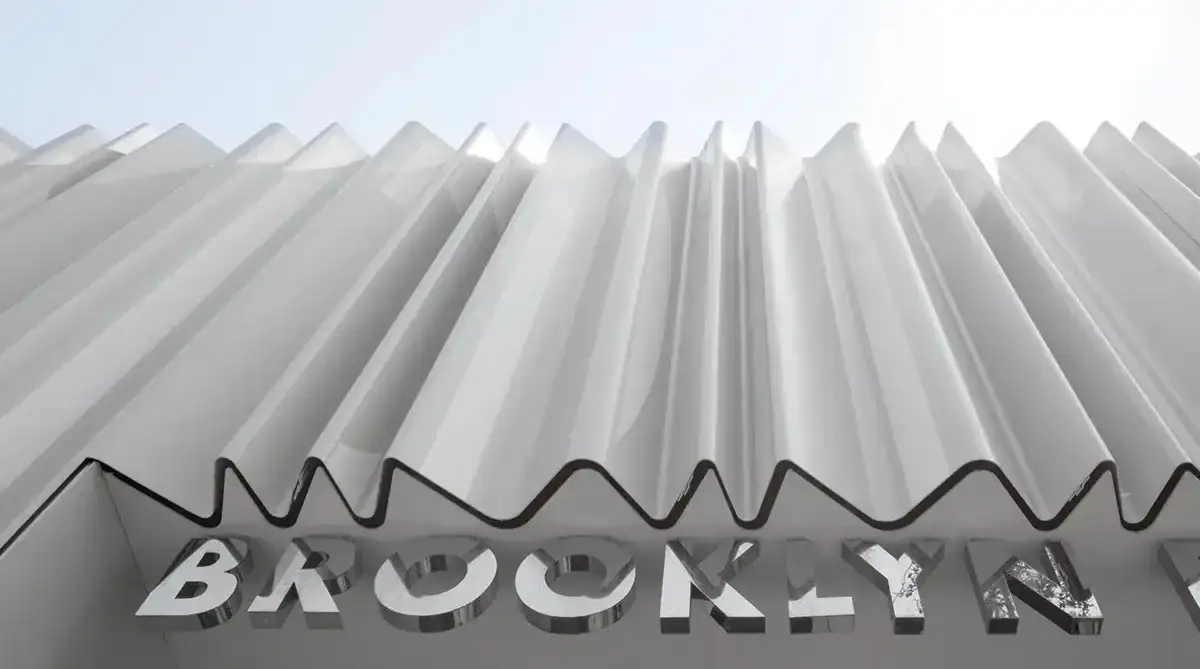
The renovated one-story library announces itself on the street (above and top of page). Photo © Naho Kubota, click to enlarge.
It seems simple enough. Or incredibly daunting, considering you’d have to convince your client, in this case the Brooklyn Public Library and the New York City Department of Design and Construction (DDC), to devote a good chunk of the construction budget for the 8,000-square-foot refurbishment to skylights and the accompanying roof alterations. Not to mention, architecturally and urbanistically, this low, deep mat-building type is one of the most difficult to resurrect. And, in the wrong hands, it may only produce so-so results. In the right hands, however—in this case the 15-person practice LEVENBETTS—the outcome is a brilliant beacon on a street where neighbors include shabby storefronts for a laundromat and meat market, among others, that leads to a dynamic and light-filled community hub.
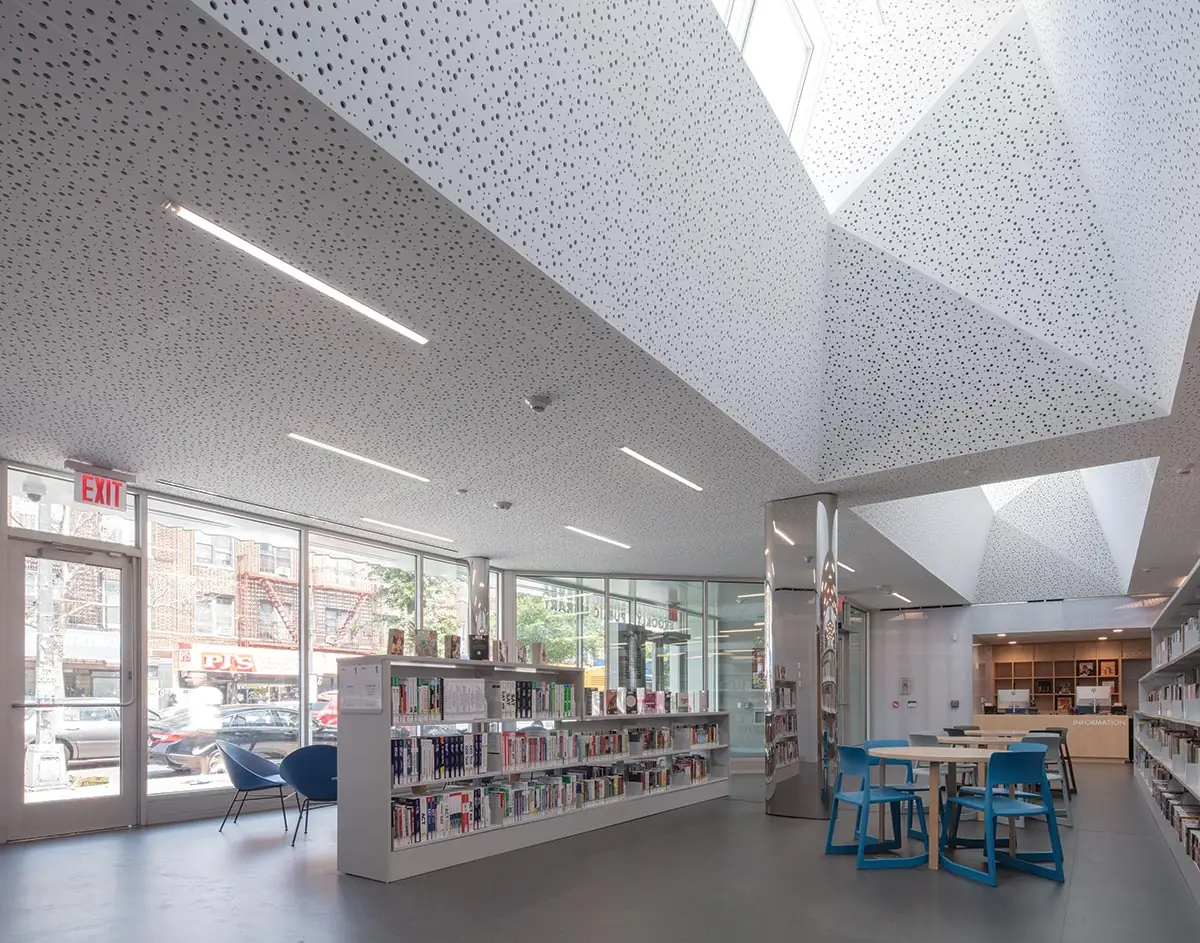
Visitors are welcomed into a soaring space filled with daylight. Photo © Naho Kubota
“Labrouste’s centrally lit library was a starting point for us,” says Stella Betts, who leads the New York–based firm with husband David Leven. It currently has three other libraries in progress throughout the city—two of them, like this one, through DDC’s Design and Construction Excellence program, and the other through the New York City Economic Development Corporation. But, while Labrouste famously fashioned his reading room for Paris’s Bibliothèque Nationale under circular roof openings and umbrella domes, LEVENBETTS chose a pointed geometry that is expressed in both the hexagonal organization of the plan and the faceted skylight openings.
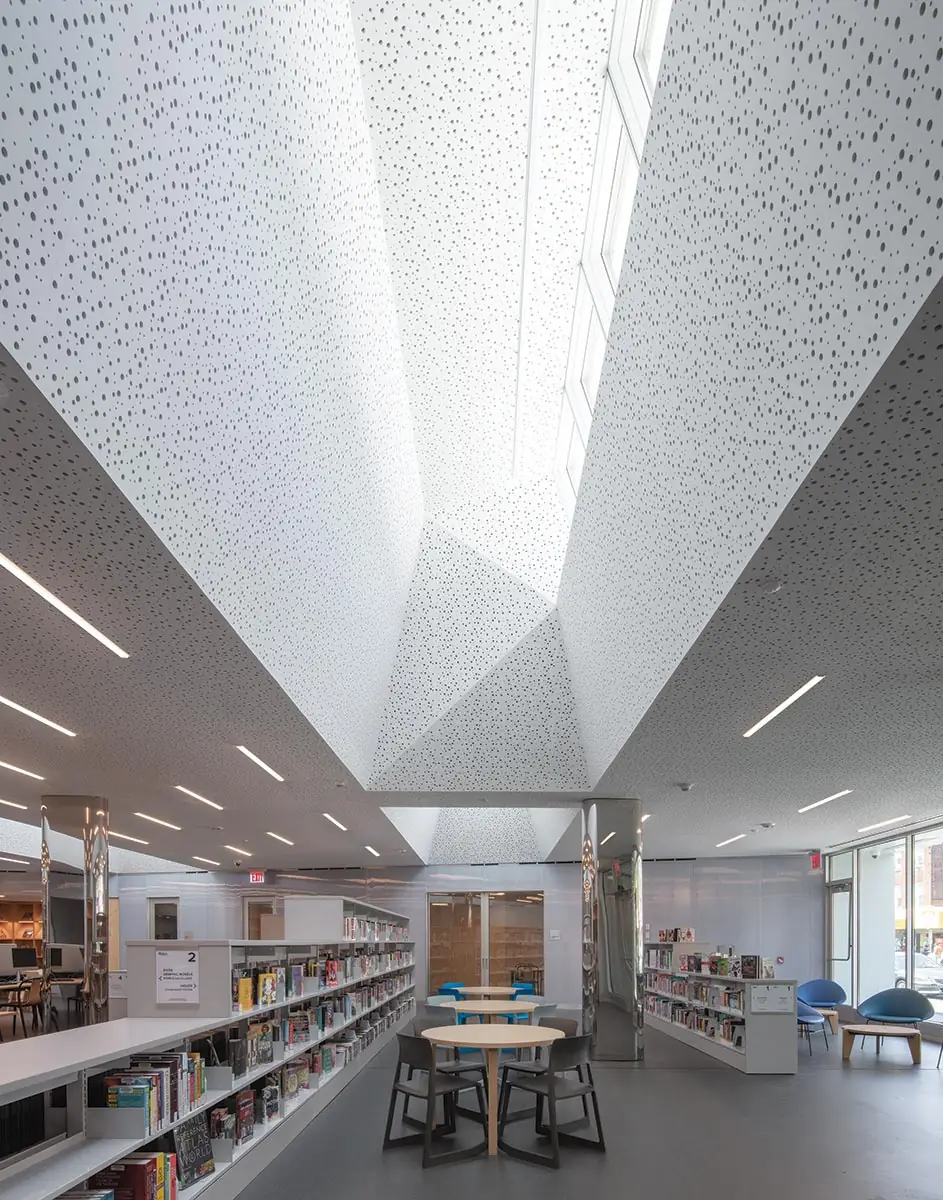
The deep light scoops dominate the central space. Photo © Naho Kubota
The plan emerged from the need to have all areas of the central space visible from the one information/security desk near the entrance, and the generous 8½-foot-deep light scoops—positioned in three wide rows along existing structural lines and spanning the entirety of that space—contort to face north above the 10-foot-high ceiling. Beyond the walls of the central hexagon, set askew within the rectangular building footprint, are tucked rooms of various sizes and shapes. These perimeter spaces, which include a staff office, meeting rooms, restrooms, and storage and maintenance closets, conceal all HVAC equipment above dropped ceilings and discreetly locate mechanical returns in, and supply fresh air through, slots along the ceiling line of the main reading room.
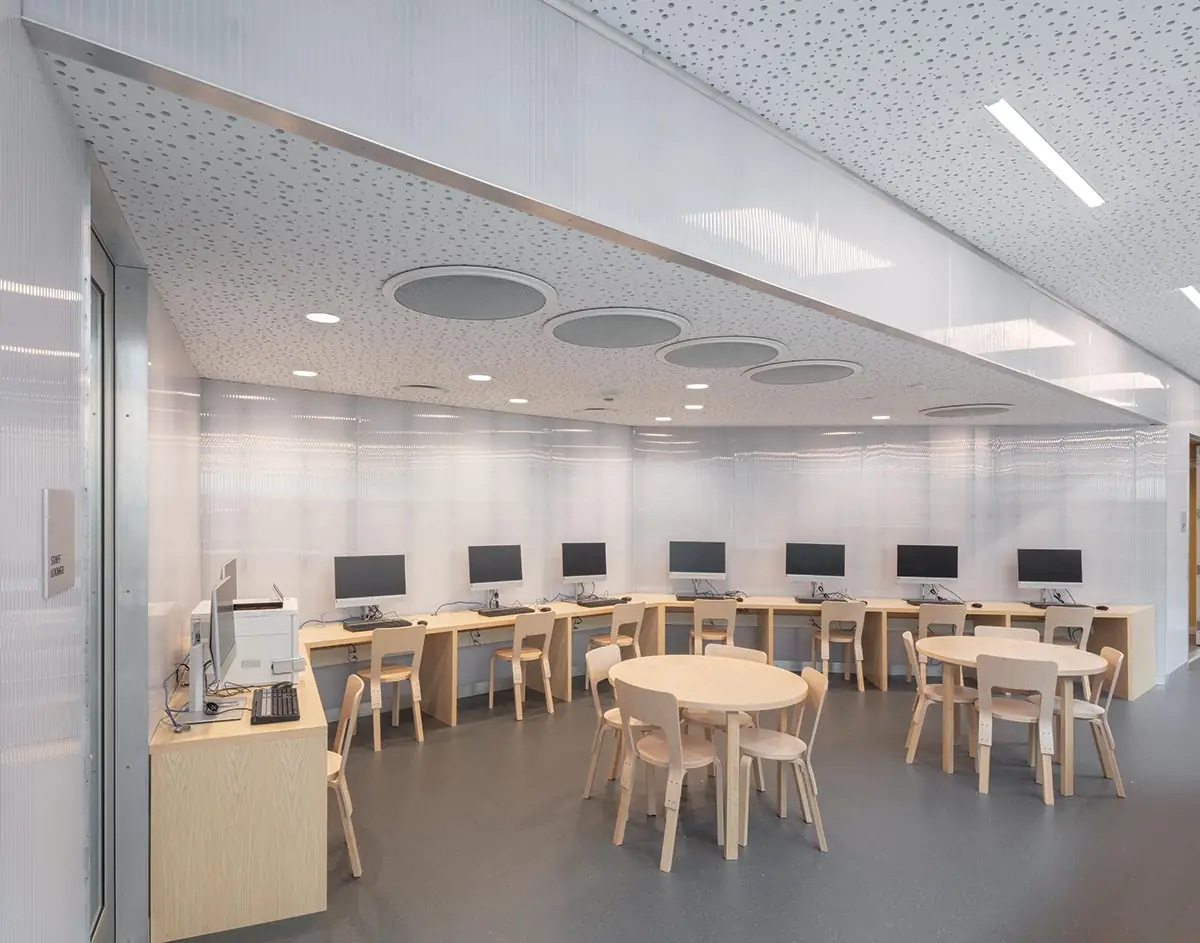
Finishes include translucent polycarbonate walls. Photo © Naho Kubota
Aesthetically, the warmth of wood and pops of color in these spaces contrast with the muted palette of the main reading area. There, corrugated translucent polycarbonate partitions mingle with mirror-finished stainless-steel column covers beneath the soft, white acoustic ceiling, which is perforated in a pattern of irregular circles that extends up through the skylights. (Fitting together those ceiling panels, especially in this faceted area, without disrupting the pattern was a particular challenge, and accomplished by bead-caulking and sanding the joints.) Thin LED strips along the ceiling are replicated bouncily on the reflective columns. Despite being monochromatic, this cloudlike space offers a symphony of textures and treatments.
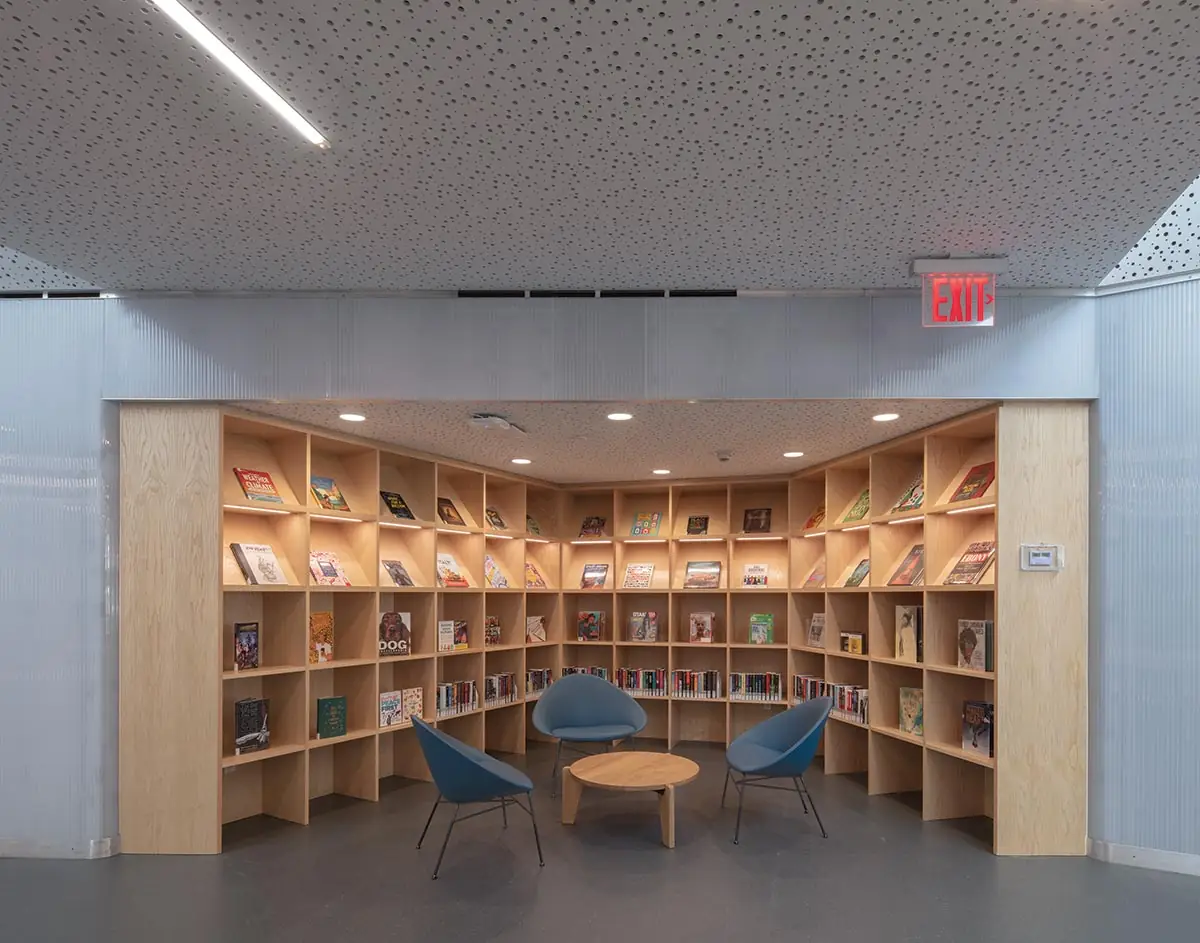
3
Rooms and nooks along the perimeter feature wood accents and pops of color (3 & 4). Photos © Naho Kubota
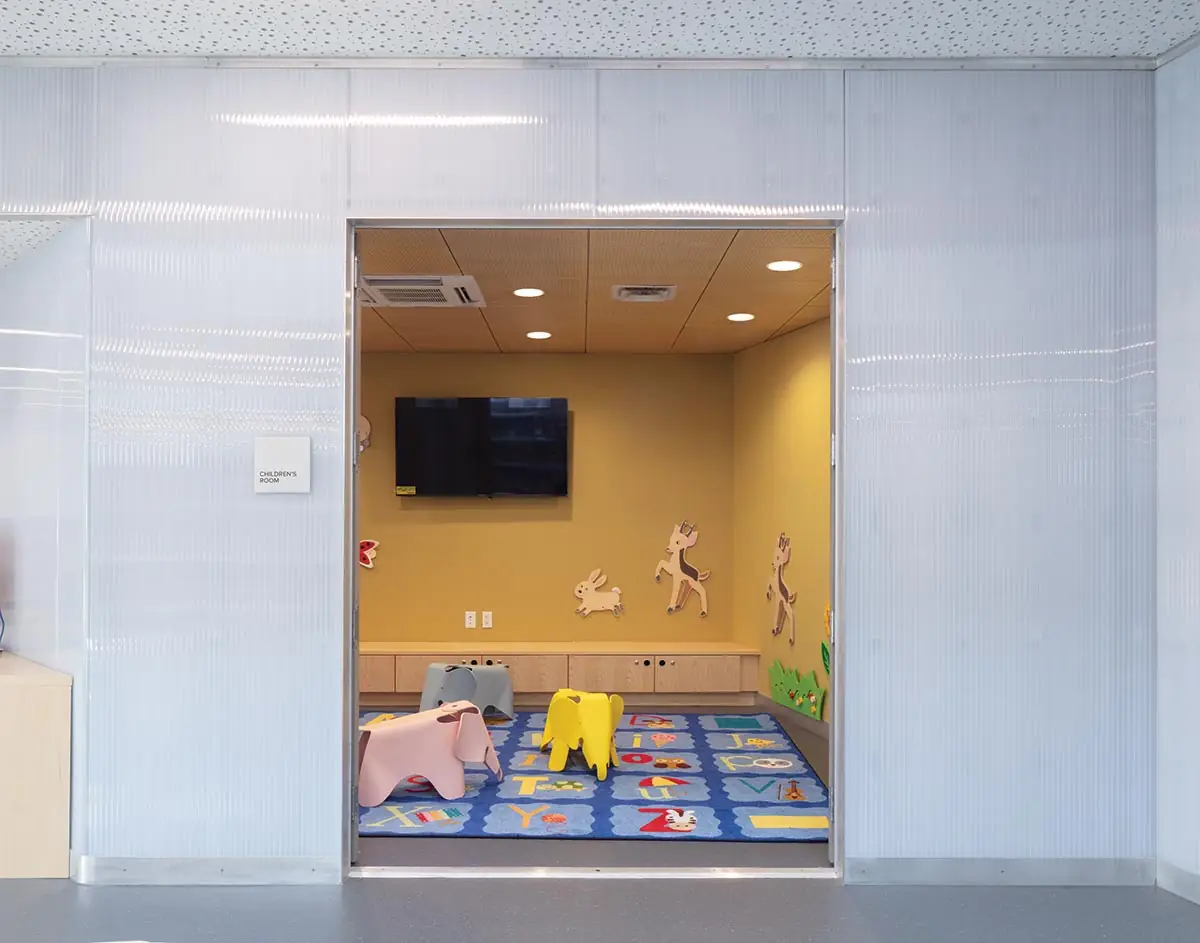
4
The same could be said for the new exterior. Once again, corrugations offer visual interest, but also a distinctly different, and elevated, street presence. The 17-foot-high facade consists of two configurations of wavy, gray-painted aluminum panels, which are flipped to essentially create four panel types and a highly variegated pattern along the 80-foot-wide frontage. The rainscreen is clipped together, bolted onto the building structure, and fit into a precisely cut soffit, designed to mirror the many crimps and curves. Where there is a large meeting room just to the right of the central entrance, the aluminum is perforated to connect occupants, often children doing activities, to the street. Where there is a smaller staff office on the other side, the aluminum remains opaque for privacy. As a finishing touch, the words EAST FLATBUSH are painted in large white letters onto the entire length of the facade—an emphatic gesture connecting the building to its place, even if only subtly perceptible.
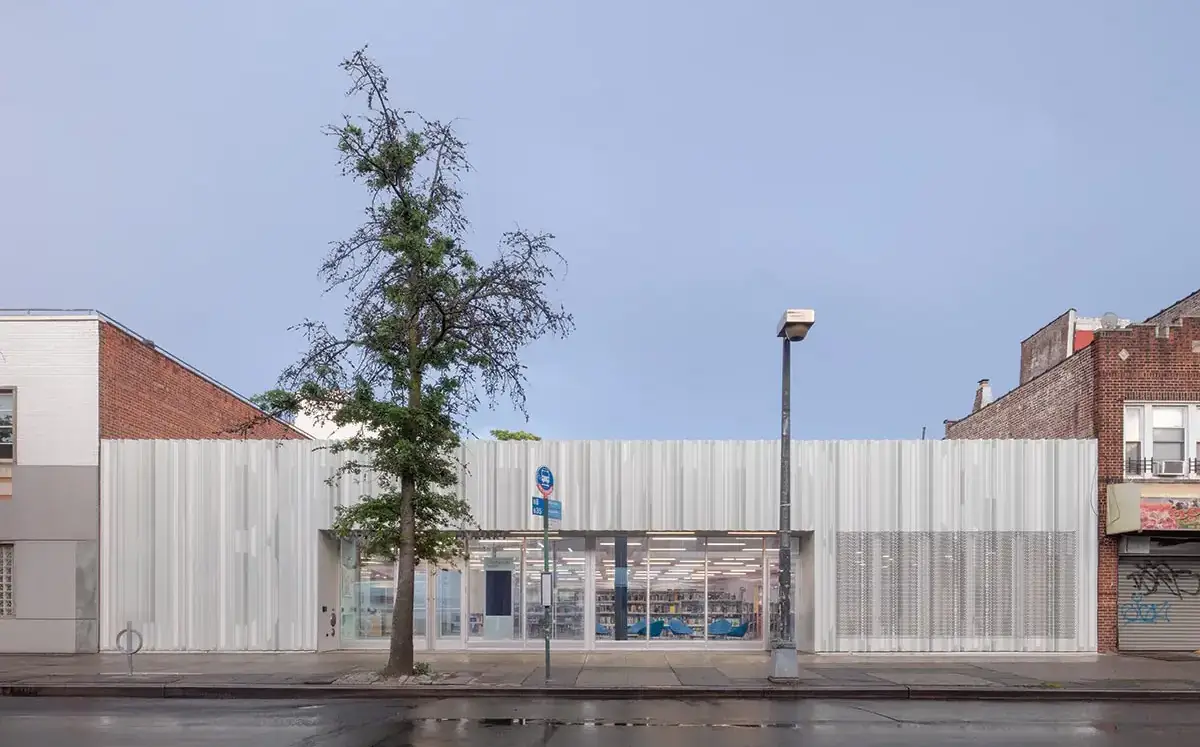
The aluminum facade is a beacon in the neighborhood. Photo © Naho Kubota
Inaugurated in June after a nearly three-year closure, the refreshed library was immediately embraced, especially on the hot August day of my visit, when it doubled as a cooling center. It is a space, unlike its previous iteration, where visitors are happy to spend a few hours. Its upgrade is not only a boon to the community, but also to LEVENBETTS, a small practice for which programs like DDC’s Design and Construction Excellence afford the opportunity to undertake more public and civic work. The firm, through the same DDC program, is now embarking on a much larger renovation of the Queens Museum.
Click plan to enlarge
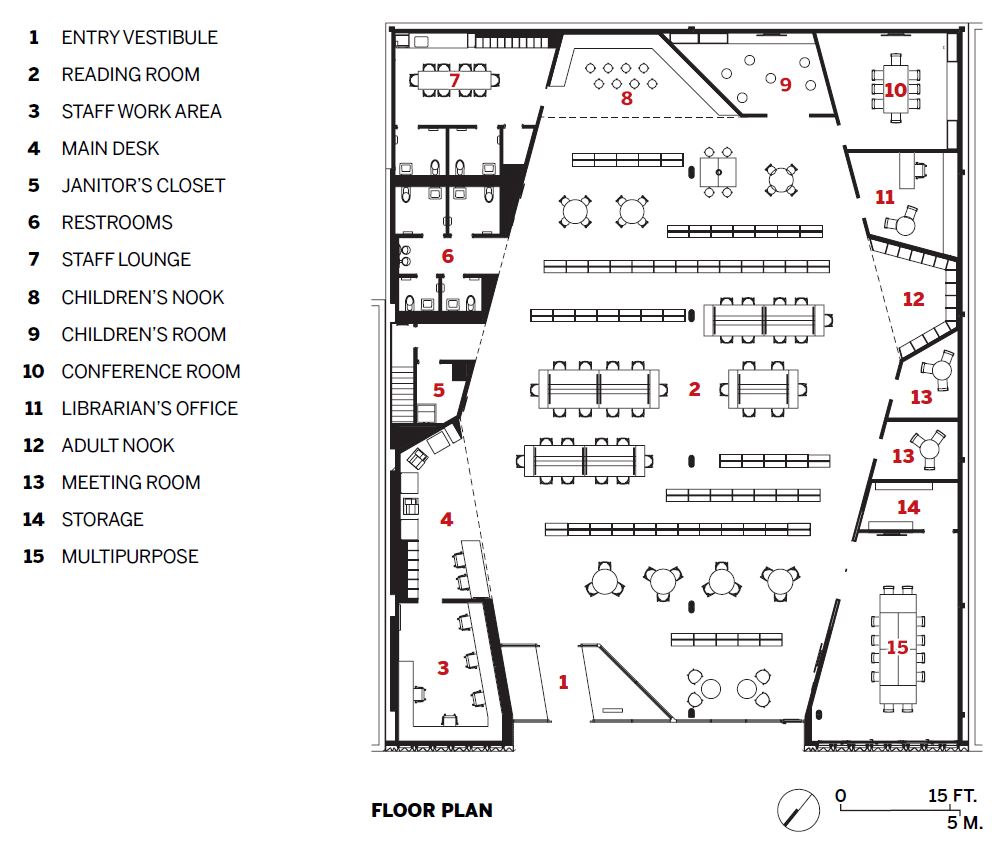
Click graphic to enlarge
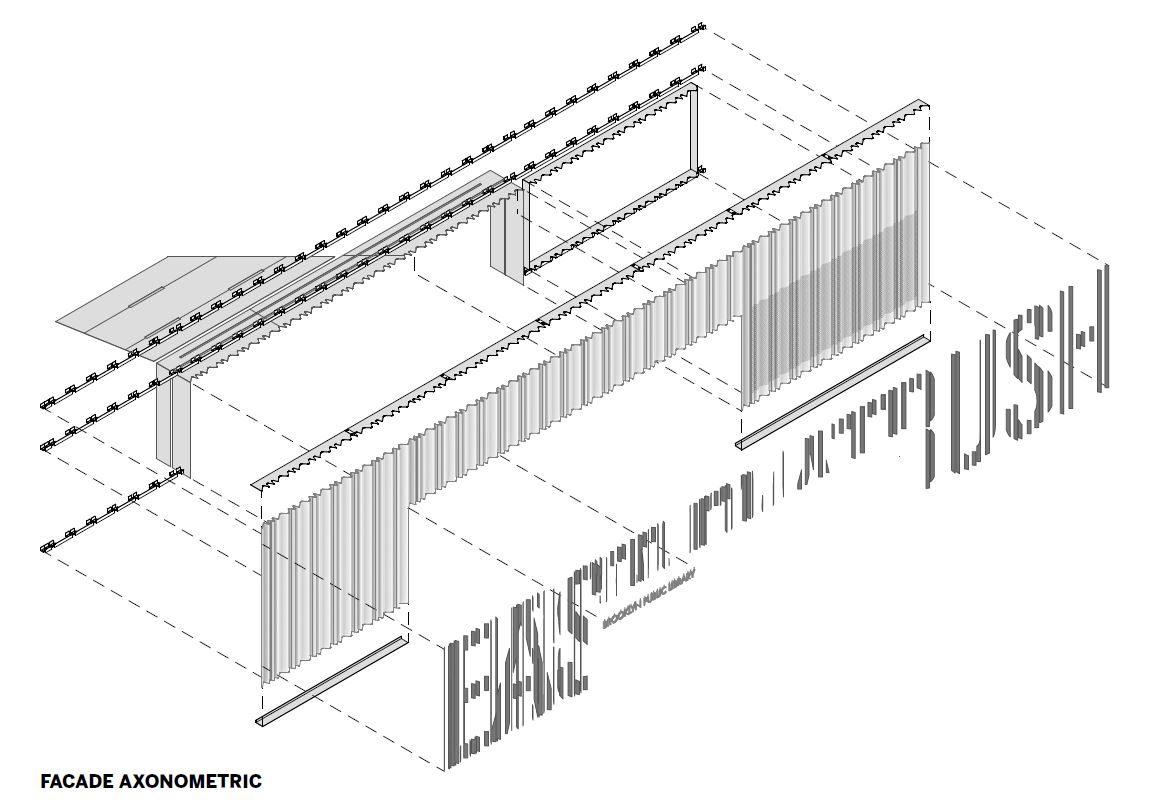
Credits
Architect:
LEVENBETTS
Engineers:
Silman (structural); Plus Group Consulting Engineering (m/e/p)
Consultant:
Lumen Architecture (lighting)
General Contractor:
XBR
Client:
NYC Department of Design and Construction/Brooklyn Public Library
Size:
8,000 square feet
Cost:
$10.1 million (construction)
Completion Date:
June 2023
Sources
Doors and Windows:
Kawneer, Arcadia
Glass:
Vitro (exterior and interior)
Skylights:
Velux
Lighting:
Selux, Zumtobel, Leviton
Acoustical Ceilings:
GypSorb (reading room); Atkar and Armstrong (perimeter rooms)
Resilient Flooring:
Forbo
Tile:
Daltile






Post a comment to this article
Report Abusive Comment